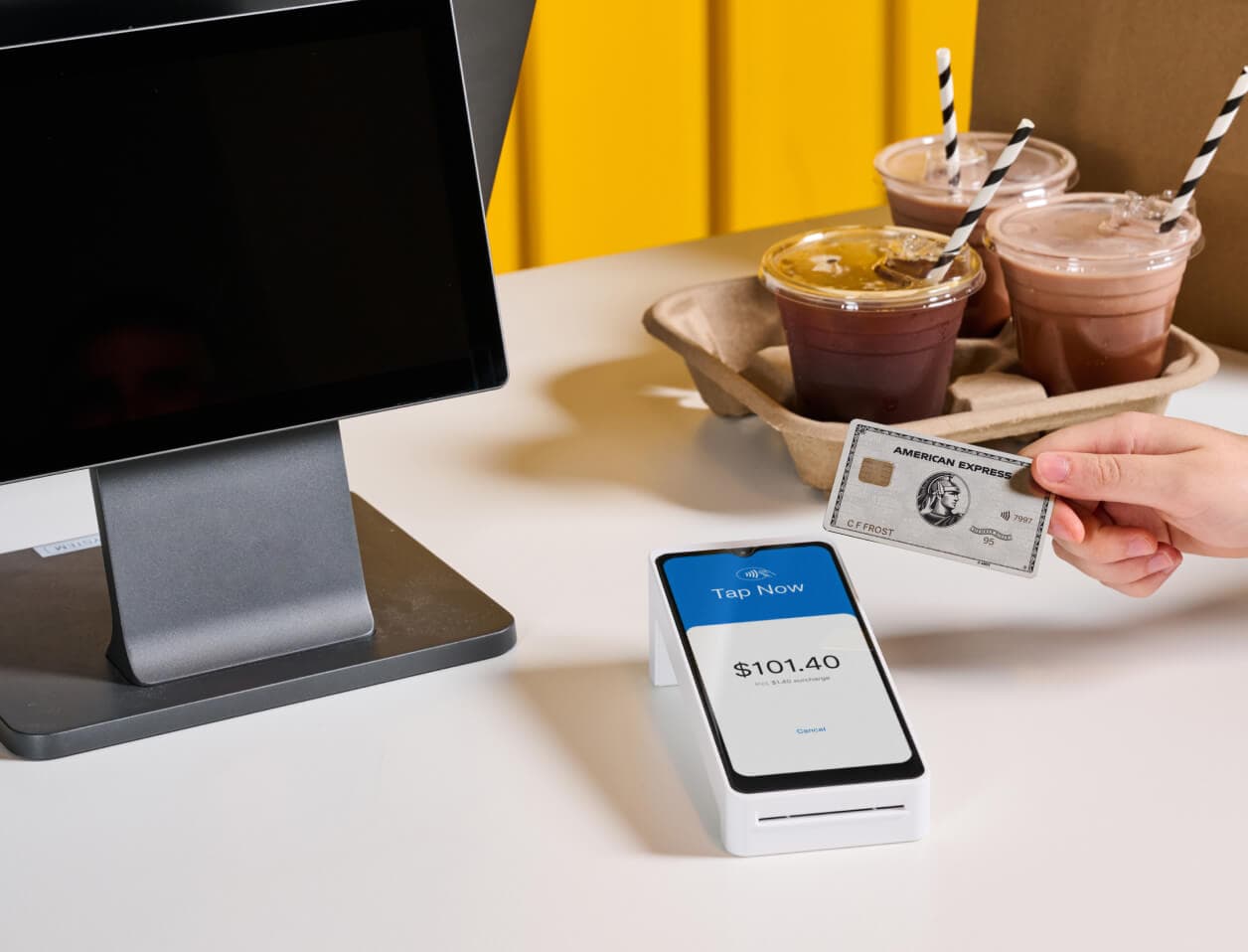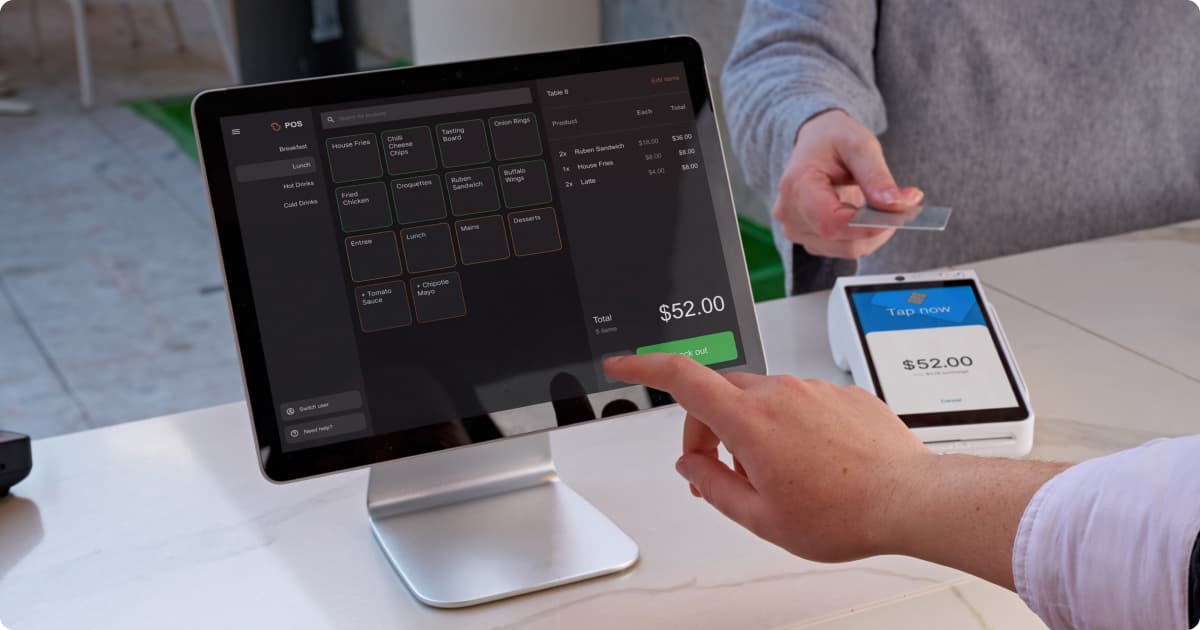
- EFTPOS & Point of Sale Solutions
What is a POS System and How Does It Work?
Whether you’re running a small market stall or a multi-venue operation, your point of sale will be the hub of your business. To help you choose the right setup, this article outlines how POS systems work and what you can expect from their hardware and software.
What is a POS system?
POS stands for point of sale, it refers to the place (in-person or online) where customers complete a purchase. A POS system is the combined hardware and software that is used to facilitate these purchases and assist the business in tracking and managing the sales. Today, POS systems encompass a variety of functions, including (but not limited to):
Processing orders
Taking payments
Tracking inventory
Providing sales analytics
Generating receipts and order dockets
Gathering marketing data
Implementing customer loyalty programs
POS systems vary greatly depending on the size of a business and the industry it's in, and come in the form of physical devices – such as countertop machines and mobile POS or 'mPOS' terminals – or virtual checkout points via online apps and kiosks for self-service orders. For small businesses, a smartphone or mobile device may suffice, while larger more complex operations may require computer systems, barcode scanners, receipt printers, and more. Read on to learn more about how POS systems work and the hardware and software included.
How does a POS system work?
There are four main steps involved in the point-of-sale process.
1. Record the items being purchased and ring up the total.
Once your customer has chosen the items or services they wish to purchase, your POS system will calculate the total value including any GST. In physical stores, you will do this either by selecting pre-programmed items or by scanning barcodes. The POS will then update the inventory count to reflect that the items were sold, and are no longer available for purchase.
2. Accept and process payment.
Next, your customer will be invited to make payment. Most commonly, this will be via an EFTPOS machine. If the terminal is integrated EFTPOS with the POS software, the value of the transaction will appear automatically on the EFTPOS terminal display. If it is unintegrated, the member of staff will be required to enter the transaction value directly into the EFTPOS machine.
3. Generate and print a receipt, or send it to the customer digitally.
When the transaction is finalised, your POS system will generate a receipt. Itemised receipts detailing all the products purchased will usually be printed via a separate receipt printer. An EFTPOS receipt will be printed directly from the EFTPOS machine, or in the case of Zeller Terminal, can also be sent to the customer digitally via email or SMS.
4. Record customer data, offer loyalty points and rewards, and generate sales analytics.
Your POS system will use the data generated by the sale to offer you helpful business insights, and identify marketing opportunities. You will be able to understand which products are most popular, when your busiest time of day is, who your most valuable customers are, and more.
Your POS system will use the data generated by the sale to offer you helpful business insights, and identify marketing opportunities. You will be able to understand which products are most popular, when your busiest time of day is, who your most valuable customers are, and more.
What hardware is typically included in a POS system?

If you operate a food truck or a market stall, you may opt for a mobile POS solution (also known as MPOS) which can be operated from a smartphone, tablet, or mobile EFTPOS terminal. However, for larger businesses, there is a range of POS hardware that can help support your operations. The following are the most typical pieces of hardware that are included in a POS system.
Display and computer
Many POS systems comprise a countertop computer where merchants can manage transactions, as well as a display that faces the customer. Traditionally, these machines have been bulky monitors with in-built cash drawers, but today, more and more businesses are opting for sleeker tablet-style setups.
EFTPOS machine
Businesses that process payments in-person, will at the very minimum, require an EFTPOS machine to accept card and contactless payments. These machines are most often supplied by a financial services provider like Zeller or a traditional banking institution. For smaller, more agile businesses that don’t want to be anchored down to the checkout counter, smartphone-based card readers such as Tap to Pay with Zeller App allow customers to make their purchase anywhere in the store.
Cash drawer
In Australia today, less than 20% of transactions use cash, which is why many businesses are choosing to go cashless. However, for those still accepting cash, you will need a cash drawer within your POS set up to securely store money securely and provide change to customers.
Receipt printer
While many modern POS providers are able to send digital receipts to customers via SMS or email, you may choose to offer your customers the option of a paper receipt. Additionally, if you run a hospitality business, you may need to print order dockets for the kitchen. In both cases, you will need a receipt and/or docket printer as part of your POS setup.
Barcode scanner
For businesses with a large product inventory, barcode scanners are a helpful way to quickly pull product information and add the cost to the checkout total. They help automate the checkout process, creating a faster and smoother customer experience. Plus, barcode scanners integrate with inventory management systems to automatically adjust stock levels.
What features can I expect from POS software?
Payment processing
The most basic and important feature of a POS system is to accept payments. Depending on the needs of your business, this may include any or all of the following:
Cash processing
Accepting secure online payments through your eCommerce site
Accepting credit and debit cards with an embedded chip
Accepting contactless payments with mobile wallets (e.g., Google Pay, Apple Pay, Android Pay)
Processing card-not-present transactions (ie. when your customer and their card aren’t in front of you so you have to manually enter their card details via MOTO or a virtual terminal)
Inventory management
Most POS systems include software that will automatically update your inventory whenever a customer orders a meal, or buys or returns an item. This allows you to easily track stock levels, anticipate when popular items will run out, and stay on budget by purchasing supplies only when necessary. Depending on the needs of your business you can find POS software that:
Digitally scans products and counts them
Manages stock variations (eg. size, colour, style, etc.)
Uses unique serial numbers to track inventory
Monitors inventory across multiple locations
Automatically reorders popular items
Table management
For dine-in hospitality businesses, a POS system can also aid in managing floors and tables. Some software allows restaurants to make a visual floor plan, allowing staff to see what tables are occupied, reserved, and available at a glance. POS software can also help staff to make bookings and manage reservations, waitlists, and track table turnover rates to help managers identify peak times and optimise seating arrangements.
Sales reporting
For businesses to effectively manage their cash flow, sales need to be recorded, categorised, and updated in real-time.POS software can provide daily, weekly, and monthly sales reports, ranging from high-level summaries to comprehensive detailed analytics. These sales and revenue reports can help to identify top-selling products and seasonal trends, revenue trends, purchasing behaviours, return rates, how profitable products or services are, and more.
Employee management
In retail or restaurant environments, where many employees work hourly, POS systems can simplify time tracking and scheduling. Instead of manually logging hours, employees can clock in and out with a card swipe or code entry, enabling precise tracking of hourly wages. This system also facilitates quick identification of top-performing employees, particularly those working on commission.
Customer relationship management (CRM)
Some POS software doubles as a customer relationship management (CRM) tool, consolidating customer data and trends and enabling you to track purchase histories effectively. These POS systems will collect customer information (such as name, age, birthday, phone number and email address), associate sales with specific customers, help you implement customer loyalty programs, and integrate with email or SMS marketing tools.
What is the difference between cloud and on-premise POS?
Traditionally, POS systems have been installed and run on a computer or server on the business premises — referred to as “on-premise”. However, today, more and more cloud-based systems have become available, offering a POS that is entirely decentralised and accessed online. So, the principal difference between on-premise POS systems and their cloud-based counterparts is that the former is installed and run on a computer physically located on the business premises, while the latter is hosted on remote servers and accessed through the internet. To learn about the pros and cons of each system, read our blog article on the differences between cloud and on-premise POS here.
Let Zeller take care of your payments.
While choosing a POS might take some further consideration (read our article on the best POS systems for small businesses here), choosing an EFTPOS provider is easy. Zeller is Australia’s favourite payments platform, trusted by thousands of businesses ranging from sole traders to national franchises. Whether you need a simple, zero-cost mobile solution or a fully integrated EFTPOS machine with the most advanced features (think tipping, bill-splitting, screensavers and more), Zeller’s platform is designed to adapt to the requirements of your business. Get in touch with us today to find out how we can help.



